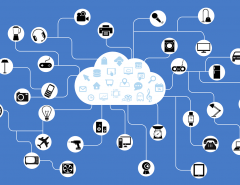According to IoT Analytics, the number of Internet of Things (IoT) devices is expected to grow to a massive 22 billion by 2025. Bain & Company estimates that the value of the combined IoT market to be USD 520 billion in 2021, which will be almost double the equivalent figure in 2017, USD 235 billion.
What these numbers underline is that the Internet of Things revolution is here to stay. The next decade will see a seamless integration of Internet-connected devices in our everyday life to the point that non-digital machines will become obsolete. We have already seen a sharp increase in the number of smart homes with Internet-connected devices.
Consequently, cybersecurity for IoT devices will also become important. In a 2018 estimate, Gartner put the value of the IoT security market to be worth USD 3.1 billion by 2021. Managing the cyber risks caused due to the proliferation of IoT devices will be key. Some of these cyber risks include:
Undiscovered vulnerabilities
In 2015, hackers found a way to steal a user’s Gmail credentials from a Samsung Smart Fridge! (Yes, you read it, right). Much more recently, a hacker leaked passwords for more than 500,000 servers, routers and IoT devices.
The sheer number of IoT devices that are being manufactured every day has exponentially increased the risks of devices ending up in consumer’s hands with undiscovered vulnerabilities. These vulnerabilities could easily be exploited by malicious criminals at a later stage.
Lack of a security framework
The lack of a security framework is a major downside to IoT manufacturing. In the race to make all devices “smart”, many manufacturers simply add internet functionality without giving too many thoughts on the security risks that entails.
An IoT device is not just a conventional device that can connect to the Internet. Every Internet-connected device needs cybersecurity safeguards to protect its users from being at the risk of cyberattacks. The IoT revolution must have cybersecurity as a basic tenet.
Improper usage by end-users
Most Internet users are aware of the common security dangers they face online. But when it comes to IoT devices, they may not have the same awareness. Improper usage of IoT devices by end-users such as leaking of passwords or failure to update these devices could put these devices along with their users at major risks.
Supply chain security in IoT
Supply chain attacks will continue to be a major cyber risk in IoT devices. To create more IoT devices, manufacturers will have to liaise with more third-party vendors and suppliers, hence increasing the attack surface. From design to manufacturing, the larger the supply chain, the higher the scope for the attack.
Coordinated botnet attacks
The risk of large-scale botnet attacks on IoT devices is huge. IoT devices are not patched as regularly as computer devices which put them at huge risk of becoming part of a large botnet army. If malicious actors can control a large number of IoT devices and can create a massive botnet network, it could lead to major chaos. Large-scale infrastructure could be affected.
The need of the hour is caution. While IoT will change the world around us, it must be approached with a proper mindset of security. By creating cybersecurity frameworks first, we can create a world where every device is connected, yet safe. Seqrite offers a range of solutions for IoT manufacturers to implement effective cybersecurity solutions.




